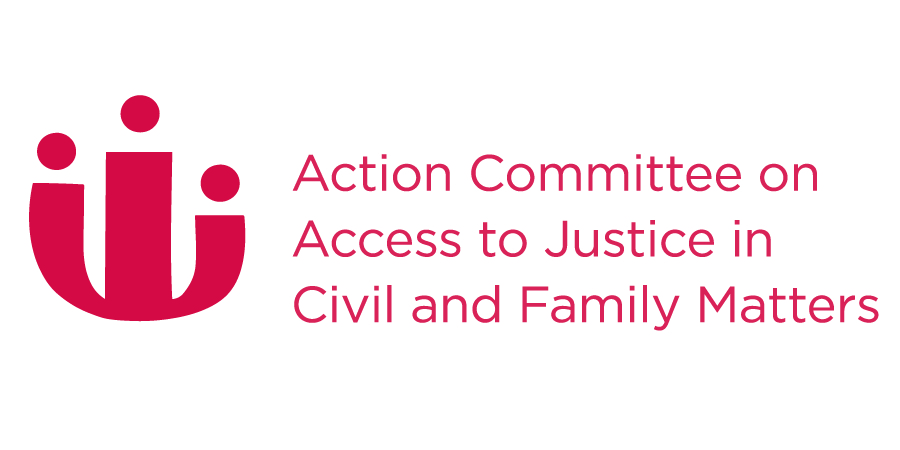Access to Civil Justice in Canada Has Been In a Steady State, But a Bit Low
Ab Currie, PhDThursday, April 5, 2018
Since 2009 the World Justice Project (WJP) has gathered data measuring the rule of law in countries around the world. One of the eight components of the WJP Rule of Law Index is Access to Civil Justice.[1] Canada’s overall score on the access to civil justice dimension was 0.72 in the 2016 Rule of Law index.[2] This put Canada in 19th place globally and 12th among 24 countries in the same region. In terms of overall Rule of Law scores, Canada ranked 12th among 113 countries.
Globally, the Netherlands, Germany and Norway received the highest scores for access to civil justice at 0.88, 0.86 and 0.85 respectively. The United Kingdom ranked 16thwith a score of 0.75 and the United States ranked 28th with an access to civil justice score of 0.65. Figure 1 shows Canada’s overall score for access to civil justice from 2010 to 2017.[3]
The recently published 2017 WJP Rule of Law Index reveals a similar trend. For the 2017 Index, Canada’s overall score on the access to civil justice dimension was 0.72 which placed Canada 20th among 113 countries. Regionally, Canada once again ranked 12th among 24 countries. The top ranked countries for access to civil justice were the Netherlands with a score of 0.87, Denmark with a score of 0.86 and Germany with a score of 0.85. For the access to civil justice Rule of Law measure, the United Kingdom’s global rank for 2017 was 14 out of 113 countries with a score of 0.75 and the United States ranked 26th, with a score of 0.67.

Figure 1: Access to Civil Justice Scores for Canada, World Justice Project, 2010 to 2017
Access to civil justice in Canada has been in a steady state over the period measured by the WJP. The level of access to justice in Canada is not poor by global standards. However, according to the measures used in the WJP, scores on access to civil justice have been consistently lower than many other high income countries.
Among the six components of the access to civil justice index[4] the two that have been consistently low over the years have been accessibility and affordability and the absence of undue delays. Figure 2 shows Canada’s scores on these two components over the 2010 to 2017 time period.

Figure 2: Canada Scores for Accessibility and Absence of Unreasonable Delay, World Justice Project, 2010 to 2017
Compared with Canada’s overall access to justice score of 0.72 in the 2016 survey and 0.72 in 2017, the score for accessibility and affordability and for absence of undue delays were considerably lower, 0.56 and 0.53 respectively in 2016 and 0.55 and 0.51 respectively in 2017.
By way of comparison with Canada, the scores for accessibility and affordability and for undue delay over the past two years for the three countries ranked highest on access to civil justice are all higher than the Canadian indicators.

Table 1: Scores for Accessibility and Absence of Unreasonable Delay, World Justice Project, Five Countries, 2016 and 2017
Why is the level of access to civil justice in Canada consistently and markedly lower than these and other high income countries? Why is Canada apparently unable to break out of this pattern? Reducing something very complex and multifaceted such as access to justice to a set of numbers might be greeted with some discomfort among readers. Further, distilling the state of access to civil justice down to a single set of quantitative measures for a federal state with considerable variations of all sorts among the 13 Canadian jurisdictions may well increase the skepticism. However, there are always trade-offs. The comparable measurement and consistent data collection over a decade that has been achieved by the WJP has considerable value for comparative study among roughly similar high income countries.
Why do the Netherlands, Denmark, Germany, Norway and other countries consistently outperform Canada on scales of access to civil justice, in particular on measures of accessibility and affordability and fewer delays? The differences might be due in part to some of the inquisitorial elements in some civil justice systems, or by the more widespread use of legal expenses insurance, by greater accessibility of legal aid or, possibly, by differences in legal consciousness and legal capability among the public in some countries compared with Canada. Comparisons involving different systems of justice must always be approached with great care. Direct transfers of ideas and structures are rarely workable. However, we have an access to justice gap to fill. Knowing what works in other countries could provide useful knowledge about approaches worth considering and innovations that might be applicable with appropriate modifications in this country. As such, the WJP offers a valuable basis for comparative study and learnings on ways to improve access to justice.
[1] The eight dimensions of rule of law measured in the WJP Index are: constraints on government powers, absence of corruption, open government, fundamental rights, order and security, regulatory enforcement, civil justice and criminal justice. https://worldjusticeproject.org/our-work/wjp-rule-law-index/wjp-rule-law-index-2016/factors-rule-law.
[2] The scale is from 0.0 to 1.0, with scores near 0.0 indicating low levels of A2J.
[3] Because of changes in the indicators after 2009 the measures are not compatible with data in the later surveys and are omitted from the graphs.
[4] The six indicators for civil justice with the Canada scores for 2016 indicated in brackets are: accessibility and affordability (0.56), absence of discrimination (0.65), absence of corruption (0.88), no improper government influence (0.89), no unnecessary delay (0.53), effective enforcement (0.73) and impartial, accessible and effective ADR’s (0.82).



